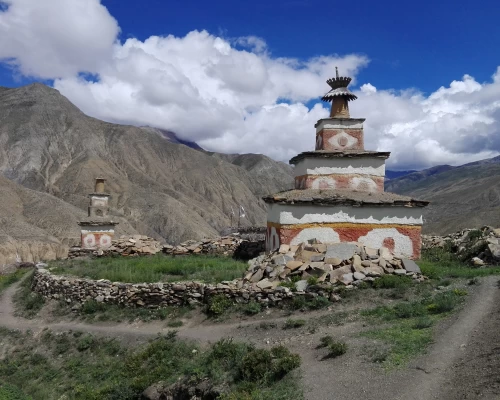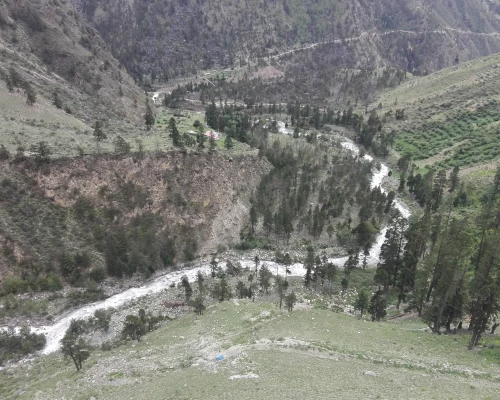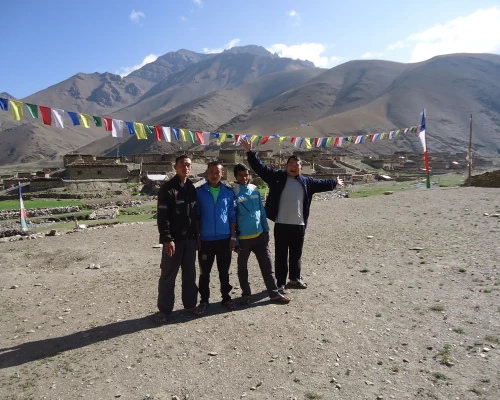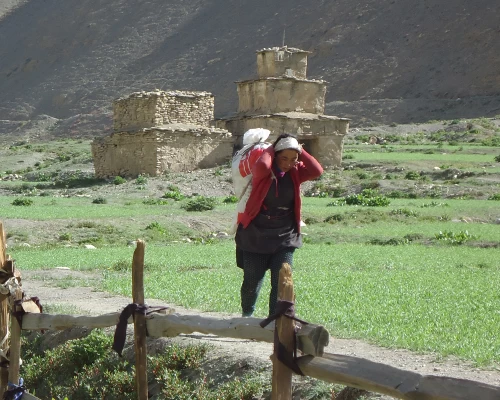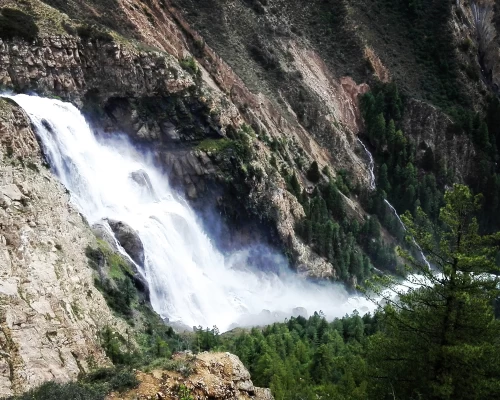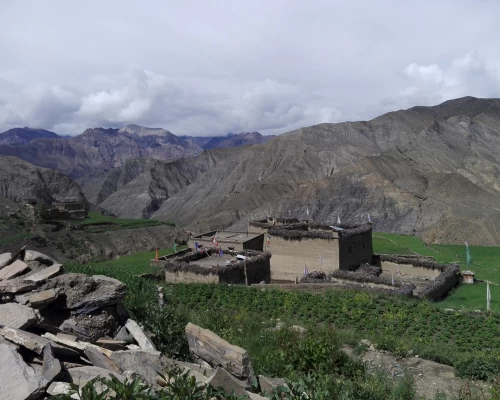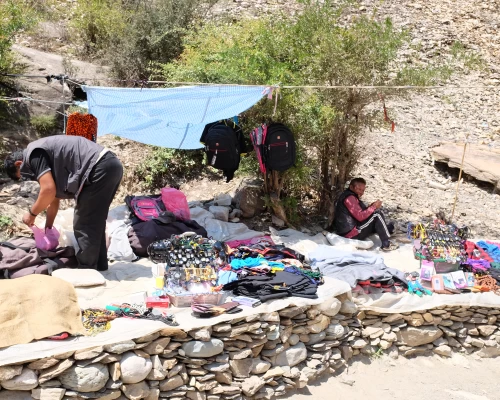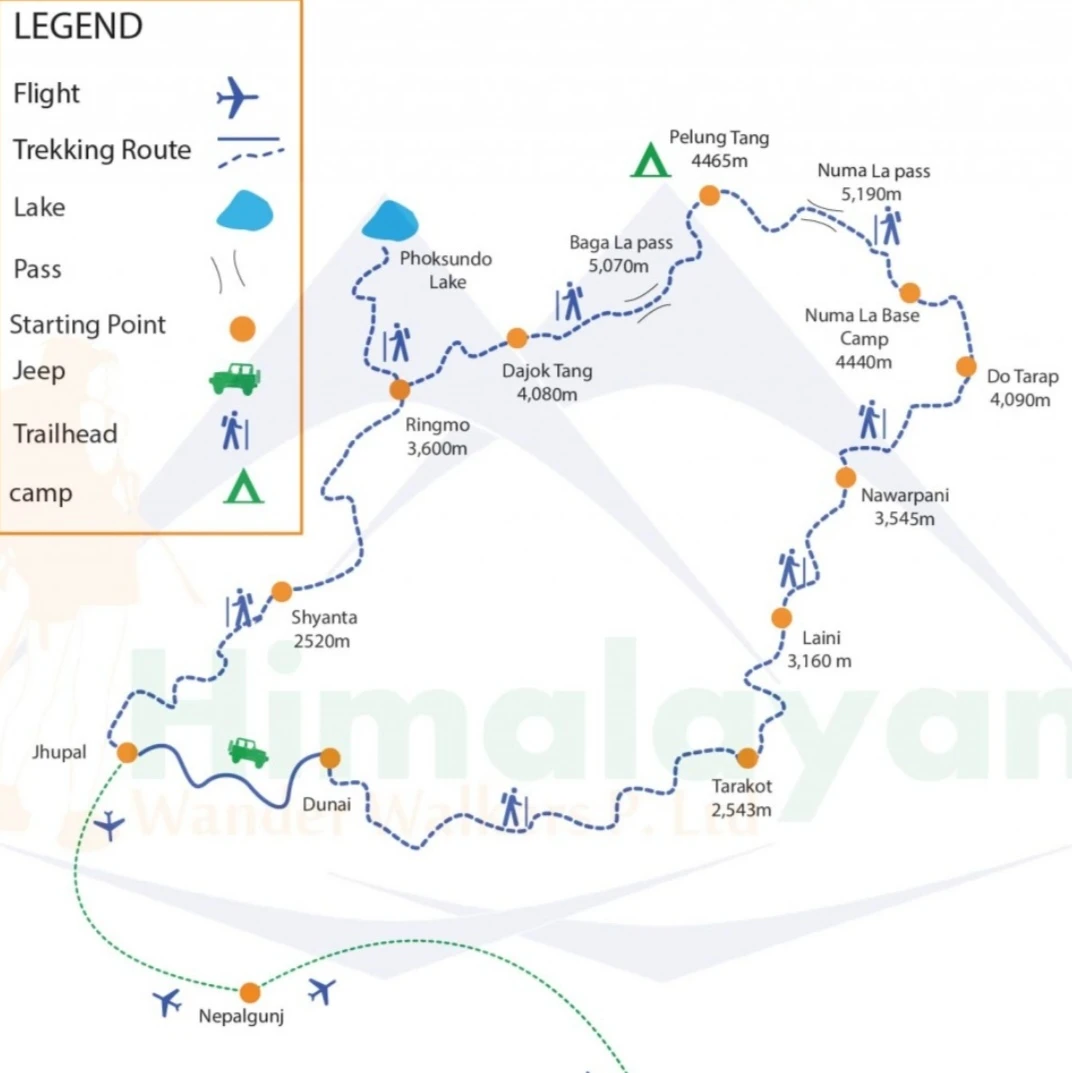Would you be able to get to Dolpo?
Most travel companies offer it by flying in and flying out. Access is more difficult in remote parts of Western Nepal than in other parts of Nepal. To get into Dolpo, the trek typically begins with flights from Kathmandu to Nepalgunj and then to Juphal in Dolpo. From Juphal, the journey continues on foot, often requiring fully-supported camping due to the sparse availability of teahouses. Nepalgunj to Dolpo is also connected with an off-road now. It takes roughly 2 days off-road, bumpy, hard driving, but it depends on the season. In rainy season direct driving is impossible.
There is no direct flight from Kathmandu or Pokhara to Jufal but if you are a big group or able to offer chartered flights or helicopter then it is possible without spending a night in Nepalgunj. Juphal is a small mountain airstrip and often bad weather delays flights.
Tibetan Influence: The inhabitants of Upper Dolpo, known as Dolpo-pa, are primarily of Tibetan ethnicity. Their culture, traditions, and language (a dialect similar to Tibetan called "Khaam") are strongly influenced by Tibetan Buddhism and the ancient Bon religion.
Cultural Significance
Preserved Lifestyle: Due to its isolation, the Dolpo-pa have largely preserved their traditional way of life, including subsistence farming (barley, potatoes, wheat) and animal husbandry (yaks, sheep, goats).
Festivals and Monasteries: The region is rich in spiritual heritage, with numerous monasteries (gompas) like the important Shey Gompa (Crystal Monastery). Festivals like Sonam Losar (Tibetan New Year), Shey Festival (a sacred celebration), and Yungney are integral to their cultural life.
Warm Hospitality: The Dolpo-pa are known for their warm hospitality and strong sense of community
Accommodation & Meals:
You can buy some local items such as barley flour, rice, potatoes Champa, and seasonal vegetables but should not be relied on. That’s why most food storage should be carried by oneself. You will have your cook, kitchen boy, spare boy, Sherpa man, and necessary mules for carrying gear with a driver for the entire tour including a professional guide. The kitchen team will supply breakfast, lunch, and dinner with hot drinks.
Such as for kitchen tents, toilet tents, dining tents, sleeping tents, sleeping bags, and good mattresses will be delivered. In some places, you can find some basic tea houses and simple accommodation.
Difficulty:
Trekking in Dolpo is considered strenuous. There are steep ascends and descends and many passes above 5000 m., We have to sleep several nights above 3500 m, and some days trekking will be more than 10 hours long in a dried and dusty landscape. The Dolpo trekking is completely outfitter and physically challenging in the arid landscape.
Permits & Regulations:
You need to have a special permit or (restricted permit) for upper Dolpo. There should be at least two trekkers in a group. Permit won’t be issued for single person or individual trekkers.
Lower Dolpo: U.S.$ 20 USD per week and U.S.$ 5 per day for additional days.
Upper Dolpo: U.S.$ 500 for 10 days and U.S.$ 50 per day for additional days.
There is also a Rs. 3000 entry fee to the Shey-Phoksundo National Park.
Personal equipment list:
Good walking boots, a pair of track shoes and slippers to wear in the camp in the evening or when the boot is wet.
Warm jacket (Fibers fill or down should be adequate.)
A Rainproof jacket with a hood or poncho.
Woolen shirts and thick sweaters or fleece jackets.
Thin and thick trousers.
Trousers for higher up in the mountains in the morning and at night. Windproof/ waterproof trousers are necessary during treks going above 3000mtr.
Thermal underwear (These are excellent to sleep at night)
A tracksuit for wearing in camp. 2 pairs of loose-fitting long shorts/ skirts. 1 lightweight long-sleeved –shirt is particularly suitable for avoiding sunburn.
A woolen or warm hat to wear in the morning and at night. Sunhat and ensure it has a wide brim to cover the face and neck.
A pair of gloves and good sun/snow glasses (warm and normal ones)
2 pairs of thin and 2 pairs of thick warm socks, Underwear, buff, and hankies as you need.
Necessary personal items if you are a woman.
Accessories:
Duffle bag or kit bag to carry gear while trekking, sleeping bag. Small rucksack to carry personal requirements for the day e.g. toilet paper, camera, film towel, soap, etc. Water bottle. Snow glasses and sunglasses, 2-4 large plastic bags to separate clean clothes from dirty ones. Headlamp with spare batteries, Snow gaiters, sun cream, personal medicine, lip guard, toothbrush, towel, Reading materials, camera, game items (optional), notebook, rubber band, pen and pencil, a diary, a pocket knife, trekking map, passport, and copies.
Drinking Water:
Travelers should be very aware of drinking water in Nepal. They are not completely adapted to digest direct normal spring water due to bacteria. So, we recommend you drink mineral water or boiled water. Also, you can use some purifier tablets such as chlorine tablets for purifying water on the trekking. We strongly recommend mineral water in the city area and purified or boiled water in the trekking.
Meals:
We will provide 3-time meals in a day on the trekking (breakfast, lunch, and dinner) as well as hot drinks like tea, coffee, and boiled water for drinking or filling water bottles….. Etc. But we won’t provide lunch and dinner during your stay in the City.
Battery Charging:
Battery charging on electricity is almost not available in this trek. So that we recommend you to bring either solar charger or enough powerful power Bank. You get electricity and Solar pannel charger in some parts then nothing around the camping areas.
Altitude sickness:
Altitude sickness (acute mountain sickness) is difficulty sleeping, dizziness, headache, fatigue, loss of appetite, rapid pulse, nausea, vomiting, etc. It affects mountain climbers, hikers, and skiers because of lower air pressure and lower oxygen levels. It occurs as the result of failure to adapt to a higher altitude. It happens most often in the brains or the longs after the fluid begins to leak from the blood vessels.
When the fluid collects in the brain, you initially get headaches, loss of appetite, nausea, tiredness, want to lie down and do nothing, and a decrease of consciousness, and the problem with balance coordination is called high–altitude cerebral edema (HACE). If the fluid is collected in the lungs, you become breathless and dry, and an irritative cough begins, coughing up blood, discoloration of the skin, and chest tightness is called high altitude pulmonary edema (HAPE).
Prevention:
To prevent acute mountain sickness; we have to follow fundamental gravity habits such as patience, consistency, and discipline in the mountain. Avoid rapid altitude gaining, drink enough water or fluid, acclimatize to adjust the body at a higher altitude, avoid alcohol, eat regular meals, get higher and sleep at lower altitudes, and avoid high altitudes if you have heart and lung disease. The main treatment for acute mountain sickness is to stop climbing and descend to a lower altitude if the symptoms occur.
If the person is seriously sick, or cannot bring him/her lower altitude by walking and carrying then we need a helicopter charter for quick evacuations.
Best Time to visit Upper Dolpo
Spring (March-May) and autumn (September-November) are generally considered the stable weather conditions for trekking in Upper Dolpo. But the summer season (May-August)is also a perfect time to do a trek due to the rain-shadow effect. Normally, August is known as the month of Ceremony in Upper Dolpo or Himalayan region.



